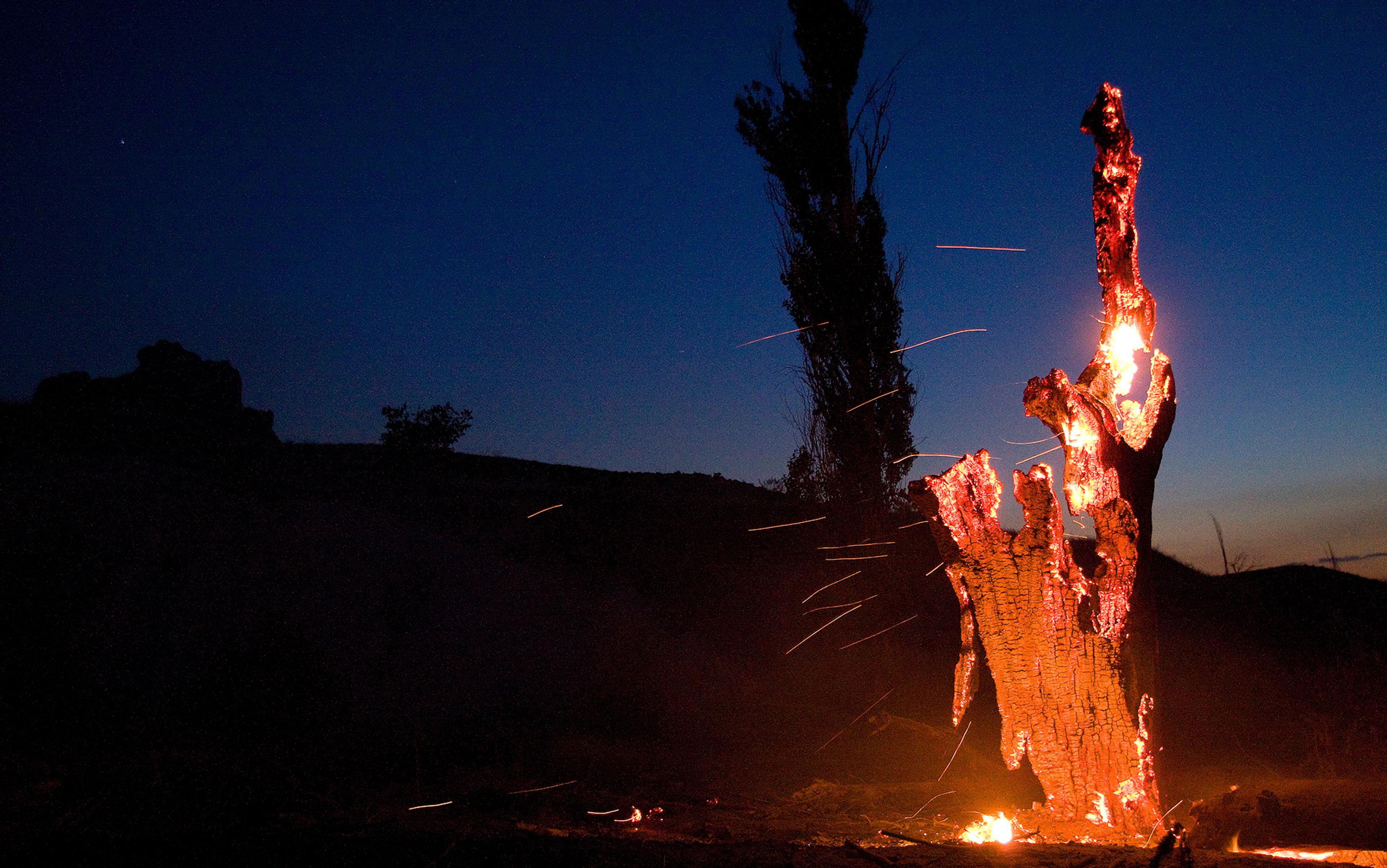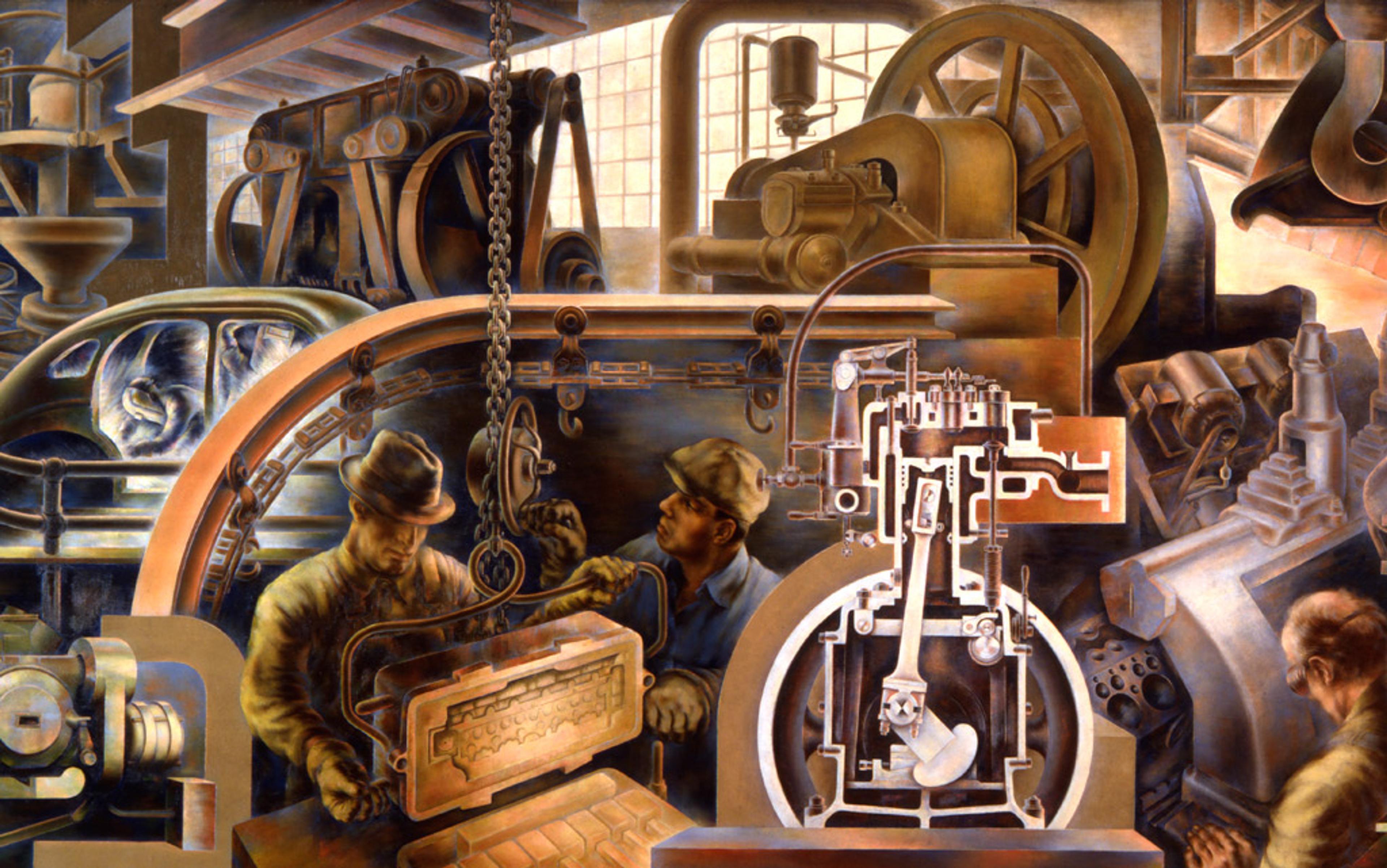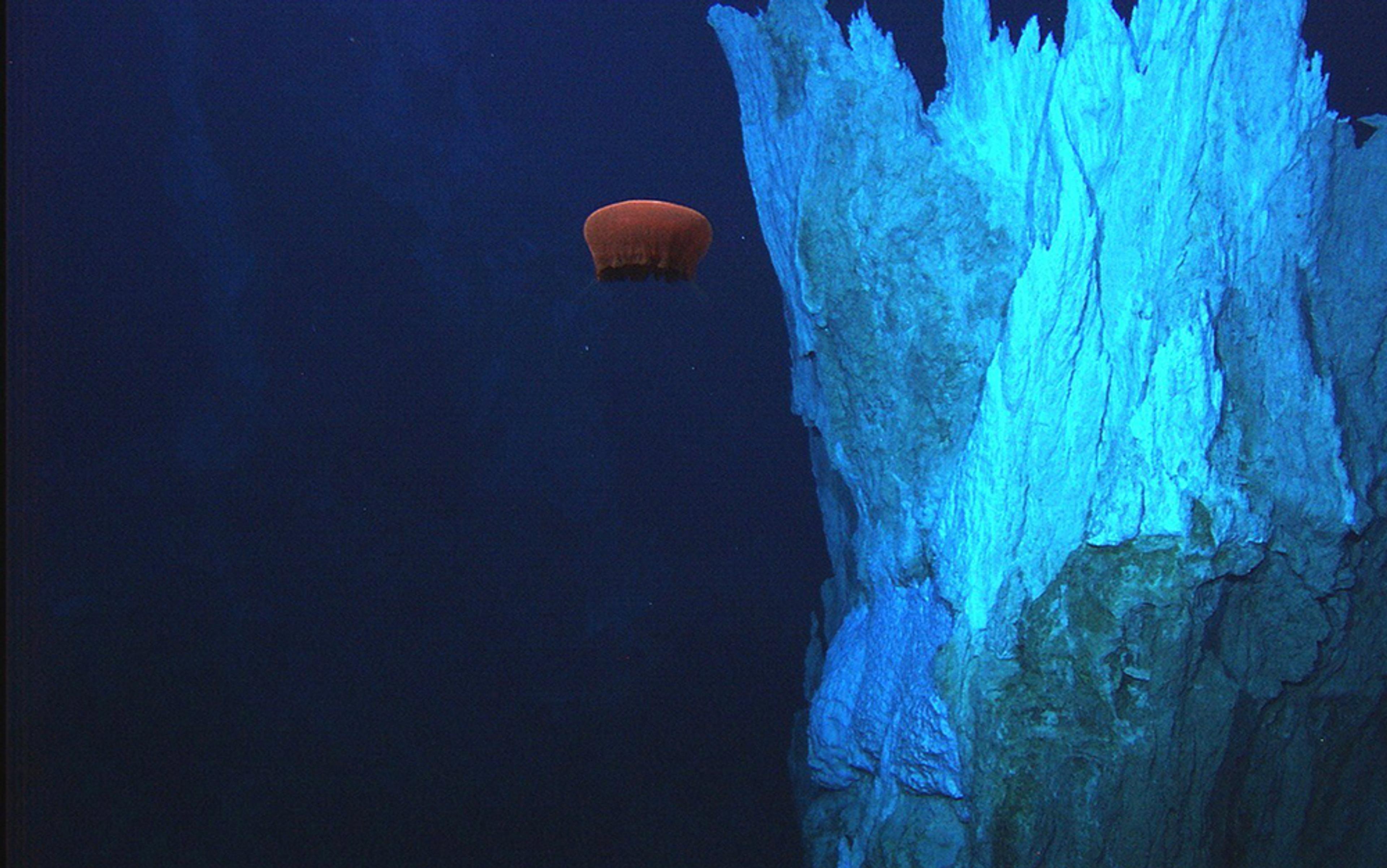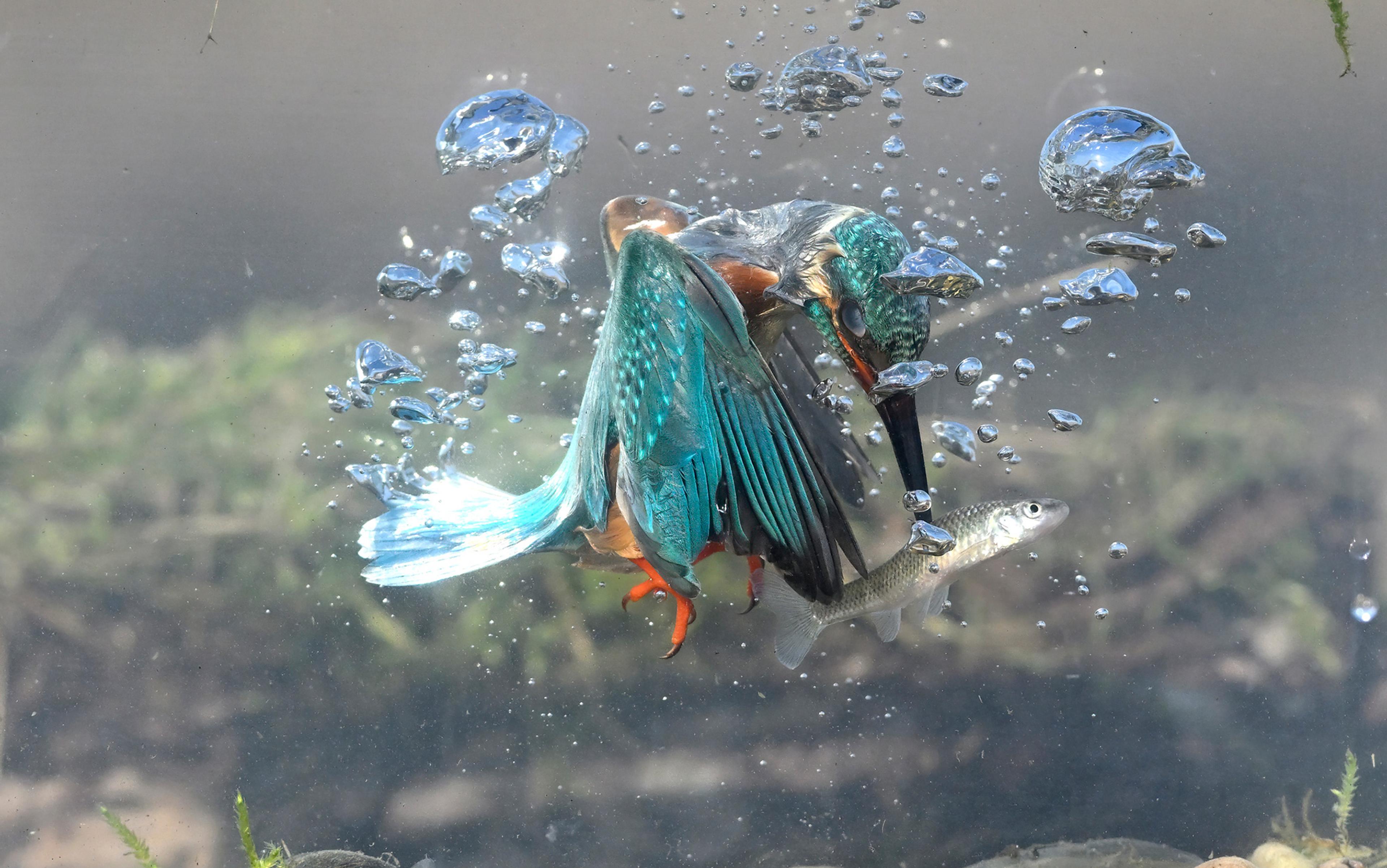Biology is wondrously strange – so familiar, yet so strikingly different to physics and chemistry. We know where we are with inanimate matter. Ever since Isaac Newton, it has answered to a basically mechanical view of nature, blindly following its laws without regard for purposes. But could there be, as Immanuel Kant put it, a Newton of the blade of grass? Living things might be made of the same fundamental stuff as the rest of the material world – ‘dead’ atoms and molecules – but they do not behave in the same way at all. In fact, they seem so purposeful as to defy the materialist philosophy on which the rest of modern science was built.
Even after Charles Darwin, we continue to struggle with that difference. As any biologist will acknowledge, function and purpose remain central themes in the life sciences, though they have long been banished from the physical sciences. How, then, can living things be reconciled with our mechanical-mechanistic universe? This is a conceptual question, of course, but it has a historical dimension: how did life on Earth actually come about? How could it have? Both at the abstract level and in the particular story of our world, there seems to be a chasm between the animate and inanimate realms.
I believe that it is now possible to bridge that gap. But before I explain how, it is worth mentioning how modern biology has generally dealt with it. Bluntly, it has dropped the problem into the ‘too hard’ basket and looked the other way. This has meant fencing off biology from physics and chemistry, and developing a separate philosophy of science. One of the leading evolutionary biologists of the 20th century, Ernst Mayr, openly argued for the ‘autonomy of biology’. Physics and chemistry deal with inanimate matter, he insisted, biology deals with living systems, and, at least for the time being, that’s that.
But this is not good enough. Nature is one. Science seeks to generalise, to unify. The purpose-driven character of life stands as a challenge to our understanding of the material nature of the universe. We can’t leave it there. And happily, we don’t have to.
I am a theoretical chemist drawn to a new field, systems chemistry. That means I’m interested in replicating molecules and the reaction networks they establish. Some recent research in this field appears to show us just how biology can be restored to the mechanical world. These replicators cross Mayr’s great disciplinary divide with impunity. In the laboratories of my colleagues, the living and dead realms bleed into one another.
And so the conceptual unification of biology with physics and chemistry is now underway. New insights are steadily coming into view. The first important one, in fact, concerns precisely that question of how life on Earth might have begun.
The name we give to the process by which simple life emerged from inanimate matter is ‘abiogenesis’. Evolution, on the other hand, is the biological mechanism by which life branched out into Darwin’s ‘endless forms most beautiful’. Traditionally, these are viewed as quite different things: the former, one of nature’s greatest mysteries; the latter, broadly understood, thanks to Darwin. Through systems chemistry, however, they stand revealed as a single continuous progression.
We now know that a mechanism akin to Darwinian evolution actually operates, in the first place, on nonliving matter – even on single molecules. Feed a population of RNA molecules the appropriate chemical building blocks and, under the right conditions, they will start to self-replicate. What’s more, over time, you will see the population evolve: slow replicators will give way to faster ones. RNA is not living material in any meaningful sense, yet it is subject to evolution. Thus we find our first bridge between living and dead matter.
The second insight is even more momentous. Evolution exhibits an identifiable driving force, a direction if you like, and this ‘teleological’ tendency acts at both the chemical and biological stages; that is, it operates both during, as well as after, what we think of as abiogenesis. Thus the purpose-driven character of life, the very thing that seemed to distinguish biology from the rest of nature, turns out not to be unique to life after all. Its beginnings are already discernible in certain inanimate systems, provided they are replicative and able to evolve. And this driving force can be described in strictly physical terms.
Put simply, it is nature’s drive towards greater stability – a drive that is as ubiquitous in physics as it is in biology.
Here’s a little truism for you. Unchanging things don’t change, and changing things do change – until they change into things that don’t. That statement is, of course, true as a matter of logic: as true as ‘one plus one equals two’. And like ‘one plus one equals two’, it turns out to make surprisingly strong predictions about how the world works. If every changing thing really can change into an unchanging thing, then we should expect all changing things to change into unchanging things eventually.
things tend towards persistent forms because stability is the end of the road for all things – perhaps even the Universe as a whole
We talk a lot about stability both in science and in everyday life. It means pretty much the same thing in either context: long-lasting, persistent, unchanging over time. And true to the prediction of our little logical truism above, there is indeed a law of physics and chemistry that says that things, in general, become more stable over time. I’m talking about the Second Law of Thermodynamics, one of the most famous laws in all of science.
The Second Law explains the direction of change and why certain things remain unchanged over time. That explanation can be given in terms of energy. High energy is associated with instability. Low energy is associated with stability, and when a physical system reaches its lowest energy state (equilibrium), no further change takes place.
How pervasive is this law? Ever since the Austrian physicist Ludwig Boltzmann revealed its mathematical logic through the concept of entropy in the 1870s, a common view has been that the entire Universe is moving towards a terminal low-energy state, a so-called ‘heat death’ of infinitely persistent forms. But notice that the stability predicted by the Second Law is just a special case of our truism: things tend towards persistent forms because stability is the end of the road for all things – perhaps even the Universe as a whole.
Let’s look at the mathematics of entropy for a moment. It used to be thought that the Second Law was simply a brute fact about the universe. Energy flowed in certain ways, there were certain basic limitations that you ran up against when you tried to convert it into work, and that was that. Until, that is, Boltzmann’s entropy formulation explained how these empirical observations revealed a deep necessity. They emerged quite naturally from the mathematical theory of probability itself.
What is entropy? Simply put, it is a measure of the orderliness of a physical system. States of low entropy are ‘highly ordered’ in something very like the everyday sense of the phrase. Picture a tidy desk, papers neatly stacked, pens in the pot. As order decreases and the desk gets messier, entropy increases.
Now, suppose that every possible arrangement of the desk is equally probable (perhaps your way of cleaning up is to take the whole room and shake it). There are of course vastly more ways to be messy than there are to be tidy – so the chances are high that your desk is messy. After all, the messy states outnumber the tidy ones. The weight of numbers is on the side of messiness. What’s more, any random change to the arrangement is likely to make it even messier. Now, random changes, in the form of bumps and jiggles, happen constantly. So things get more stable (and messier) over time. As the Universe undergoes change, entropy increases.
High entropy and low energy, however, are just one manifestation of stability. Does nature offer others? It does. It turns out that stuff can be highly persistent even when it is highly unstable energetically. Indeed, that’s precisely what we find in the world of replicators.
Living things are low-entropy and energy-consuming, so they are unstable in the thermodynamic sense. Nevertheless, they can still be remarkably stable in the sense of persisting over time. Some replicating populations (certain bacterial strains, for example) have maintained themselves with little change over astonishing periods – millions, even a billion, years. They exhibit what we call dynamic kinetic stability (DKS). And, like entropy, DKS turns out to be driven by simple, powerful mathematics.
Change the environmental conditions and the winner of the replicative race can change
In fact, it rests on the mathematics of exponential growth. This is a pattern that we often see in self-replicating systems, and they don’t even have to be physical. Suppose you start with a dollar. Double it every week and, in well under a year, you’ll be the world’s richest person (assuming no one else discovers your secret). Keep going for another five years and you’ll have more dollars than there are atoms in the observable universe. Self-replicating molecular systems can, in the right circumstances, start off on the same explosive path. But there’s a twist: when they do, a new kind of chemistry emerges. Ultimately, it is this new chemistry that leads to what we term biology.
How could such a transformation come about? Why do replicating molecules give rise to replicating cells? In a word: evolution. Or, in four more: replication, variation, competition, selection.
Replicators do not always make perfect copies of themselves, and their variants have to compete with the originals for resources. Because both the originals and ‘bad’ copies share the same tendency towards exponential growth – because neither of them will stop unless they run out of resources – the more effective replicators end up driving the less effective ones into extinction. Accordingly, less persistent replicators tend to evolve into more persistent ones. Just like in the ‘regular’ chemical world, change in the replicative world is directed toward greater stability. Once again, it all comes down to the weight of numbers.
There are, however, two big differences. The first is this. In the replicative world, stability can be unrelated to energy content. Provided there is a source of metabolic energy to keep the thermodynamic books balanced, anything goes. So this is genuinely a different kind of stability.
The second difference is a little harder to grasp. With entropy, the weight of numbers is always in the same direction. That keeps things simple: everything tends towards randomness and disorder. With DKS, on the other hand, stability is fickle. Some replicators are indeed astonishingly durable, but, crucially, DKS always remains circumstantial. Change the environmental conditions and the winner of the replicative race can change. In fact, that’s exactly what makes life so capricious and the evolutionary path largely unpredictable: the mathematics of replication forces it into a paradoxically restless search for rest.
Why are living things so complex? Here’s another seemingly eternal riddle that we’re now in a position to answer. As many a systems chemist has learnt to his or her sorrow, the simplest molecular replicators can be quite finicky. You need fancy labs, specialised equipment and dedicated researchers to get them to replicate and, even then, it can be hit or miss. By contrast, biological replicators – living things – are extraordinarily robust.
Consider some of the simplest life forms, bacteria. These highly complex entities can survive and prosper pretty well anywhere – some deep within the Earth, some high in the atmosphere, some in boiling water, some in nuclear reactors, no labs, equipment or human assistance required. The inordinate complexity of all living things has emerged for one reason alone – to facilitate the replicative function, thereby enhancing the stability of the replicating system.
How, then, did that extraordinary complexity come about? The answer, of course, is: one step at a time. Gerald Joyce, professor of chemistry at the Scripps Research Institute in La Jolla, California, recently demonstrated how a single replicating RNA molecule, on its own, is a relatively inefficient replicator. In contrast, a two-molecule RNA replicating network, in which each RNA molecule catalyses the formation of the other, is far more effective. The two-molecule system is more effective for the same reason that picking up an object with two fingers is a lot easier than with just one, and nature has exploited that fundamental design principle. So complexity and function go hand in hand. Joyce’s RNA experiment demonstrated the first (conceptual) step on a thousand-mile journey – toward that stupendously effective (and inordinately complex) replicator, the bacterial cell.
the reason for the teleological character of all living things becomes obvious: nature’s most fundamental drive is toward greater stability
Finally the secret of nature’s two material facets – animate and inanimate – is coming into focus. Animate and inanimate forms came about because there are two mathematical engines of stability. Boltzmann showed us the more familiar thermodynamic one, but the other is traceable to the English cleric Thomas Malthus. After all, it was Malthus, studying the economics of famine in the 1790s, who first recognised the profound consequences of exponential growth in a biological context. From Malthus, Darwin took his rise, and then on to the founding fathers of systems chemistry – Sol Spiegelman, Manfred Eigen, Leslie Orgel, Günter von Kiedrowski, and others.
Of course, once we recognise the existence of two distinct stability kinds, one based on probabilities and energy, the other on exponentially driven self-replication, the reason for the teleological character of all living things becomes obvious. Nature’s most fundamental drive, dictated by logic itself, is toward greater stability. That drive has a thermodynamic manifestation, as expressed through the ubiquitous Second Law, but it also has a kinetic manifestation – the drive toward increasingly persistent replicators. Two mathematics, two material forms. This distinction does not trace the dividing line between living and dead matter precisely – but it does explain it, and many of the other riddles of life into the bargain.






